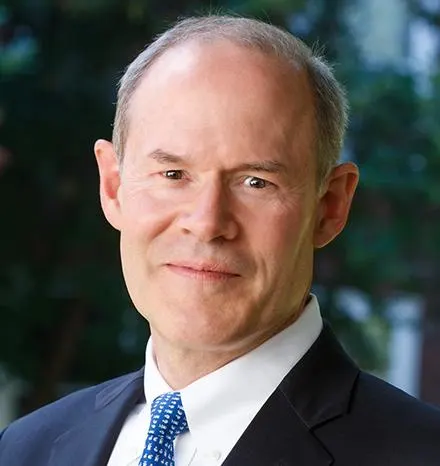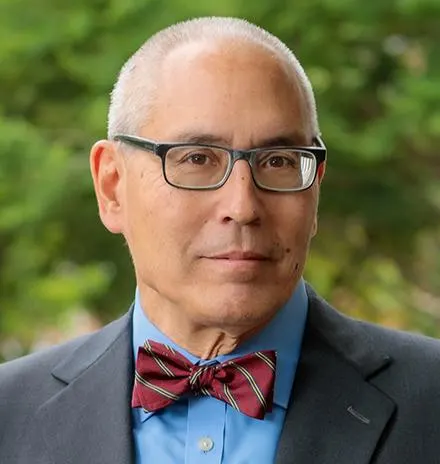By 2050, the Earth's population will likely exceed 9 billion people, up 30 percent from 6.9 billion today, according to projections from both the US Census Bureau and the United Nations. What's more, the population in the world's cities is expected to increase by 3 billion.
With those sobering numbers in mind, several of the planet's top city planning and environmental business experts gathered at Harvard Business School earlier this month to discuss how to support the inevitable population growth. The conference—titled "Investing in Cities of the 21st Century: Urbanization, Infrastructure, and Resources"—tackled three giant subjects: water, energy, and transportation. The conference was sponsored by Harvard Business School's Business and Environment Initiative and co-chaired by professors Rebecca M. Henderson, John D. Macomber, and Forest L. Reinhardt.
Water Planning Gets Short Shrift
In terms of urban planning, "water is often planned last and gets short shrift," said John Briscoe, a professor at the Harvard School of Engineering and Applied Sciences, who participated in a panel a session dedicated to water. "Water is absolutely the poor cousin of the utilities."
For starters, panelists talked about how the majority of the world's controlled water resources are dedicated to agriculture, leaving precious little for drinking, cooking, and bathing. (It's a subject complicated by climate change; wonky weather patterns have made it that much harder to predict rain and droughts.)
There is a huge public need here, which is potentially a great opportunity for business —Rebecca M. Henderson
"The next big revolution is going to have to happen in food production," said Anand Shah, CEO of Piramal Water Private Limited, a for-profit start-up that provides clean drinking water to more than 64,000 rural villagers in India. The company uses a franchise model in which local entrepreneurs filter and sell water to members of their community. "In India, 87 percent of water is used for agriculture, and another 6 percent is for industry."
The panelists also discussed the idea that relative to other utilities, water is very cheap in most cities, suggesting that charging more to city residents would make them realize that it is a valuable—and not infinite—resource. The possibility of profit would also encourage more participation from the private sector.
This raised the question of how to persuade urban residents that price increases might be necessary to support the burgeoning population—and how to make them understand that public-private partnerships might make sense to expedite allocation.
"There has to be someone at the top who says, ‘This will be good for the city‘—and who will make sure it isn't corrupt," said Jaime Augusto Zobel de Ayala (HBS MBA 1987), chairman and CEO of Ayala Corporation, one of the largest business conglomerates in the Philippines, a nation that recently started relying on public-private partnerships for water filtration and distribution.
Ayala's public utility subsidiary, Manila Water Company, was awarded the operation of the privatized water system for the East Zone of metro Manila. He said it wasn't difficult to warm residents to the idea of privatization because the public water supply had previously been damaged by the effects of El Niño.
"There wasn't much dispute because things were terrible," he said, adding that many poor residents—who used to have to buy water from the back of a truck—are now paying 10 times less for water than they did before the private sector got involved.
"There is a huge public need here, which is potentially a great opportunity for business," said professor Rebecca Henderson, about water research. "It is one of the great innovation frontiers."
Energy—our Buildings Are Wasting It
In a panel on energy entrepreneurship and demand management, moderated by Professor Forest Reinhardt, experts focused on two main problems: buildings in general are far too inefficient, and people in general are clueless about their individual electricity usage. The sole investor on the panel, Craig Huff (HBS MBA 1993), co-CEO and co-founder of Reservoir Capital Group, said that rather than focusing on brand-new energy sources, his firm often focuses on companies that make current energy sources more efficient.
Urban buildings consume 40 percent of the world's electricity, said Andreas Schierenbeck (HBS AMP 176, 2009), president of Siemens Industry's Building Technologies Division. Fortunately, for most of those buildings, there's the potential to cut down electricity usage by up to 75 percent via various readily available energy-saving measures, noted Philippe Delorme, EVP of strategy and innovation at Schneider Electric, which is based in France, but does a third of its business in Brazil, Russia, India, and China. Unfortunately, it's hard to persuade people to institute those energy-saving measures.
"Human beings don't like to change, and everything involving energy management does imply the need to change," Delorme said, adding that electricity demand will double in 20 years if we maintain status quo practices.
This raised an important question: "How do we connect the energy consumers with a value proposition that makes it worth their while?" asked Gregg Dixon, SVP of marketing at EnerNOC USA, which helps large organizations in the US, Canada, and the United Kingdom track their electricity use.
Human beings don't like to change, and everything involving energy management does imply the need to change —Philippe Delorme
Dixon noted that while many consumers would jump at the chance to save 25 percent on their monthly mortgages, even if it meant paying some financing fees up front, they seem less apt to invest in energy-saving measures that will save them money in the long run, such as compact fluorescent light bulbs, air-sealing services, and tools that help customers measure energy expenditures.
Schierenbeck supposed that electricity customers might be more apt to conserve energy if their utility bills reflected exactly how they were using that energy from month to month—giving them a better idea of how and where they could save money. "Right now, people can't tell you where they're expending energy but they can tell you what their monthly bill is," he said.
Delorme agreed. "We don't know how much we spend because it's not visible enough," he said.
Moderator John Macomber noted a general need for entrepreneurial funding for start-ups that cater to greener cities. "The need is huge, the demand is huge, and you have to partner."
Transportation—making Public Transportation Worth Our While
The transportation panel kicked off with a presentation by Liu Thai-Ker, an urban architect and city planner who helped plan the oft-praised public transportation system in Singapore. The city encourages use of its system by keeping rider fees low, discourages individual automobile purchases by charging high ownership taxes, and keeps the trains running on time through public-private partnerships. Some 65-70 percent of city residents ride public transportation, he said, and while the city's population has doubled since 1970, it does not look congested. "In Singapore, we always plan for 100 years of growth."
US particpants at the conference acknowledged that the Americans might do well to follow in Singapore's footsteps. "We are a long way from having anything you'd call a sustainable urban transportation system in the United States," said Tyler Duvall, associate principal in the Washington office of McKinsey & Company. "Incentives in urban transportation are exceptionally weak."
A conference attendee from Seattle noted that bus fares in his city are higher during rush hour than at any other time—which, he said, only discourages him from taking the bus to work.
Another panelist noted that while public trains are important to any large city's traffic ecosystem, they're only one part. "It doesn't make sense just to move people from station to station," said Fabienne Herlaut (HBS MBA 1984), president of Ecomobilité, a Parisian venture fund that focuses on transportation start-ups. "You don't spend the night in a station. You have to provide transportation from door to door."
Paris has seen success with its self-service bike rental system, Vélib', which features thousands of bicycles and cycle racks all over the city. Subscribers pick up a bike close to their point of departure and return it to a rack closest to their destination. Herlaut is bullish on electric bikes; Ecomobilité recently funded the company Urban-Cab, an electric bike courier and taxi service.
As for Singapore, Liu said the country would like to do more to encourage bike riding, but there's an inherent humidity problem, especially for women. "Once on the bicycle, all the makeup just melts off their faces," he said.


